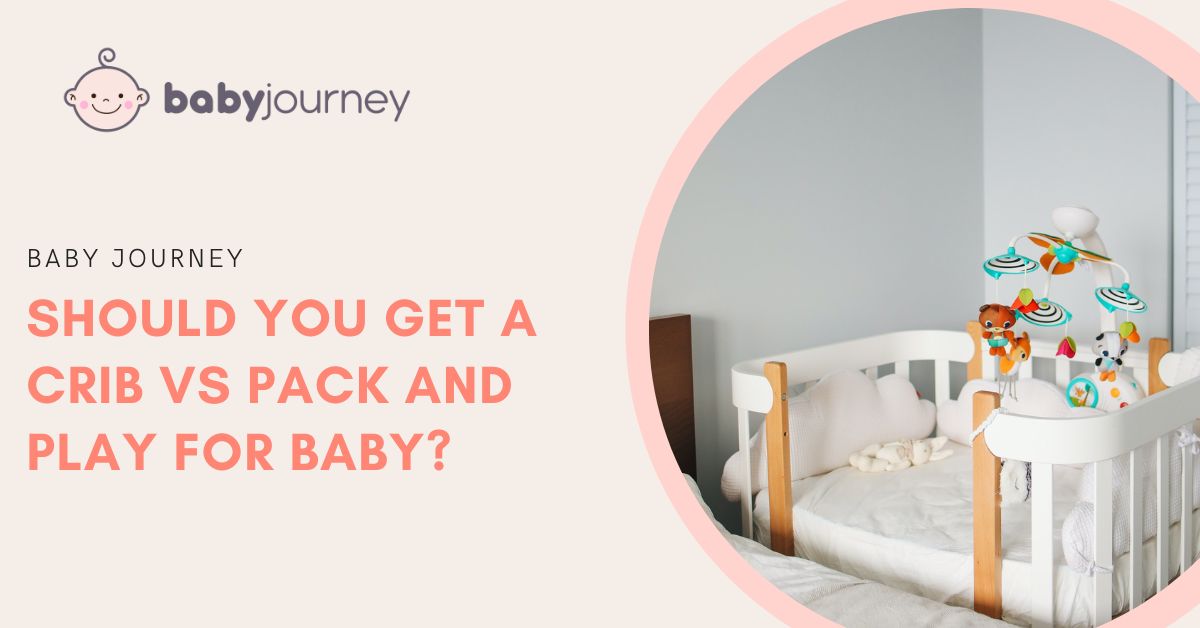When preparing for a new baby, one of the most important decisions parents have to make is choosing where their little one will sleep. The two most popular options are a crib and a pack and play. Crib or pack and play? While both options provide a safe space for your baby to sleep, there are some key differences between the two.
Cribs are a more permanent sleeping solution and are typically used in a baby’s nursery. They are sturdy, durable, and can be used for several years until your child is ready for a big-kid bed. On the other hand, pack and plays are more portable and can be easily moved from room to room or taken on the go. They are also more affordable than cribs and can be a great option for families on a budget. However, they are not designed for long-term use and may not be as comfortable as a crib.
Understanding Cribs and Pack n Play

When it comes to choosing a sleeping arrangement for a baby, many parents debate between a crib and a pack n play. Both options have their pros and cons, and ultimately the decision will depend on individual needs and preferences.
Cribs
A crib is a fixed piece of furniture with slatted sides for a baby to sleep. It is typically larger and sturdier than a pack n play, and can be used for a longer period of time. Cribs often come with additional features such as drop-down sides, adjustable mattress heights, and the ability to convert into a toddler bed.
Cribs are generally considered a safer option for long-term use, as they meet strict safety standards and regulations. However, they can also be more expensive and take up more space in a room.
Pack n Play
A pack n play is a portable playpen that functions as a sleep or play area, as it typically contains a mattress. It is a more affordable and space-saving option compared to a crib. Pack n plays are also versatile and can be used for travel or as a playpen during the day.
However, pack n plays are not as sturdy as cribs and do not have the same features, such as drop-down sides. They are also not recommended for long-term use as a baby’s primary sleeping arrangement, although they can be used for short-term situations such as travel or temporary living arrangements.
Differences between Cribs and Pack n’ Plays
The main differences between cribs and pack n’ plays are their size, sturdiness, and features. Cribs are larger and sturdier, with more features such as adjustable mattress heights and the ability to convert into a toddler bed. Pack n plays are more portable and affordable, but not as sturdy and lack some features of cribs.
Pack ‘n Play as a Crib
While it is possible to use a pack n play as a crib, it is not recommended for long-term use. Pack n plays are not as sturdy as cribs and do not have the same safety features, such as drop-down sides. Some babies may also not sleep as well in a pack n play compared to a crib.
Pack ‘n Play vs Crib
Ultimately, the decision between a pack n play and a crib will depend on individual needs and preferences. If space and affordability are a concern, a pack n play may be a better option. However, if safety and long-term use are a priority, a crib may be a better choice.
Pros and Cons
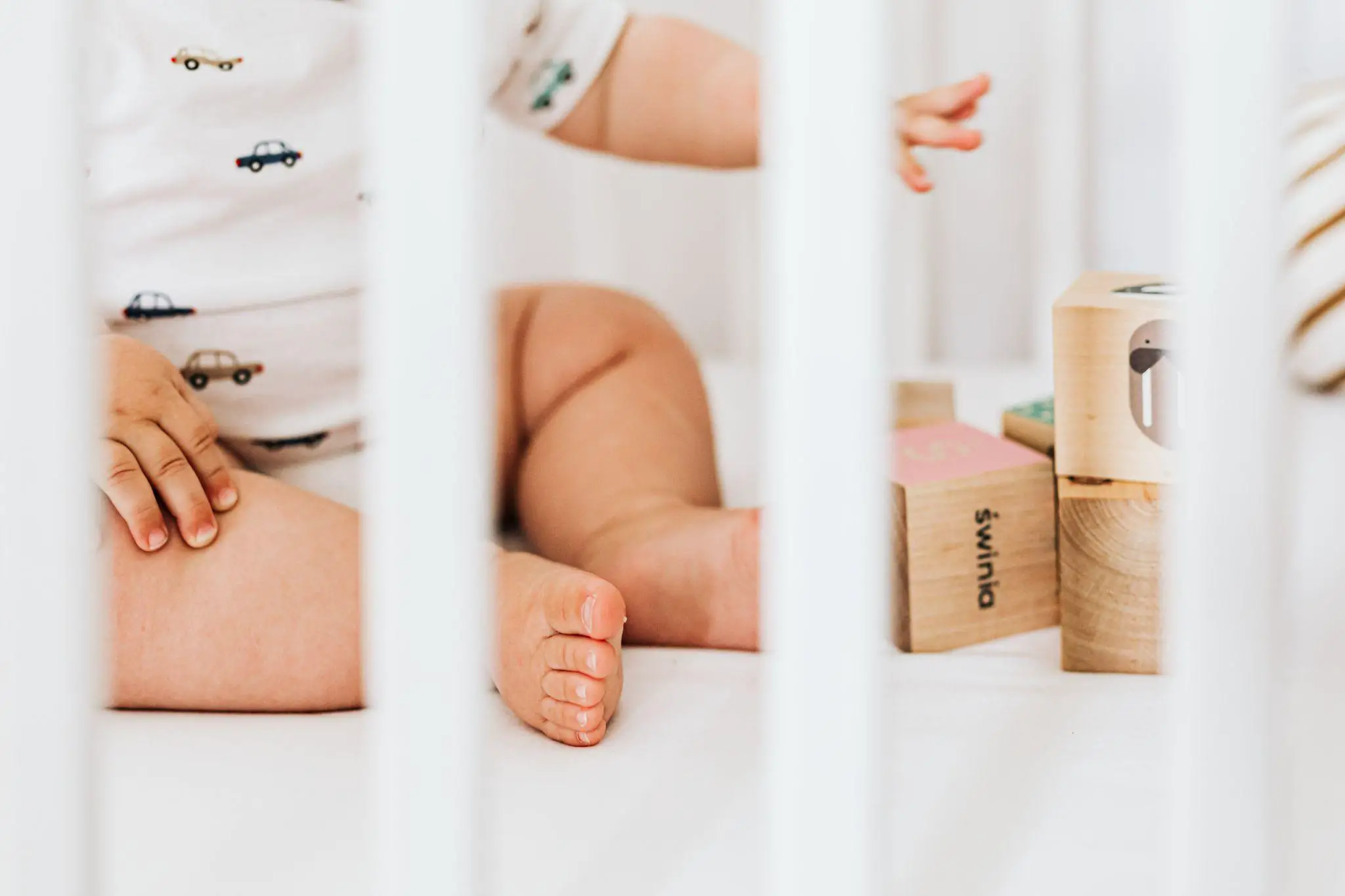
Pros of Cribs
Cribs are a popular choice for parents who want a safe and comfortable place for their baby to sleep. Here are some of the pros of cribs:
- Durability: Cribs are designed to last for several years and can be used for multiple children. They are made of sturdy materials that can withstand wear and tear.
- Comfort: Cribs offer a comfortable and spacious sleeping environment for babies. They come with a firm mattress that provides the right amount of support for a baby’s growing spine.
- Safety: Cribs are designed to meet strict safety standards to ensure that babies are safe while sleeping. They have slats that are spaced apart to prevent a baby’s head from getting stuck.
Cons of Cribs
While cribs have many benefits, there are also some cons to consider:
- Cost: Cribs can be expensive, especially if you want a high-quality one that will last for several years. Additionally, you may need to purchase a separate mattress and bedding.
- Size: Cribs take up a lot of space in a room, which can be a problem if you have a small nursery.
- Portability: Cribs are not very portable, which can be a problem if you need to travel with your baby.
Pros of Pack n Play
Pack n Plays are a popular alternative to cribs, especially for parents who travel frequently. Here are some of the pros of Pack n Plays:
- Portability: Pack n Plays are lightweight and easy to transport, making them a great option for travel. They can be folded up and stored in a carrying case for easy transport.
- Affordability: Pack n Plays are generally less expensive than cribs, making them a great option for parents on a budget.
- Versatility: Pack n Plays can be used as a playpen or a changing station, in addition to a sleeping area.
Cons of Pack n Play
While Pack n Plays have many benefits, there are also some cons to consider:
- Size: Pack n Plays are generally smaller than cribs, which can be a problem if you have a larger baby or if you want your baby to have more space to move around.
- Comfort: Pack n Plays may not be as comfortable as cribs, especially if you are using the included mattress. Additionally, the mattress may not be as supportive as a crib mattress.
- Durability: Pack n Plays may not last as long as cribs, especially if they are used frequently or roughly. The materials may wear down more quickly, which can be a safety hazard for your baby.
Overall, both cribs and Pack n Plays have their pros and cons, and the decision ultimately comes down to personal preference and lifestyle.
Comparing Sizes
When it comes to choosing between a crib and a pack n play, one of the most important factors to consider is the size. Cribs and pack n plays come in different sizes, and it is crucial to choose the one that fits your baby’s needs and your space.
Size of Cribs
Cribs are typically larger than pack n plays and are designed to be a permanent fixture in the baby’s room. Standard cribs have dimensions of about 52 inches in length and 28 inches in width. However, there are also mini cribs that are smaller in size and perfect for smaller spaces. Mini cribs are typically about 38 inches in length and 24 inches in width.
Cribs are designed to provide a comfortable and safe sleeping environment for babies. They have slatted sides that allow air to circulate freely and ensure that the baby can breathe easily. Cribs also come with a variety of features, including adjustable mattress heights and drop-down sides that make it easier for parents to reach their baby.
Size of Pack n Play
Pack n plays, on the other hand, are smaller and more portable than cribs. They are designed to be used as a playpen or a travel crib and can be easily folded and stored when not in use. Depending on the model, pack n plays can have different sizes, however they are usually smaller than normal cribs.
Pack n plays are a great option for parents who are always on the go and need a portable and convenient sleeping solution for their baby. They are also perfect for parents who have limited space in their home and need a smaller sleeping solution for their baby.
In conclusion, when deciding between a crib and a pack n play, it is important to consider the size of each option and choose the one that best fits your baby’s needs and your space. Cribs are larger and more permanent, while pack n plays are smaller and more portable. By taking the time to consider your options, you can choose the best sleeping solution for your baby.
Design and Features
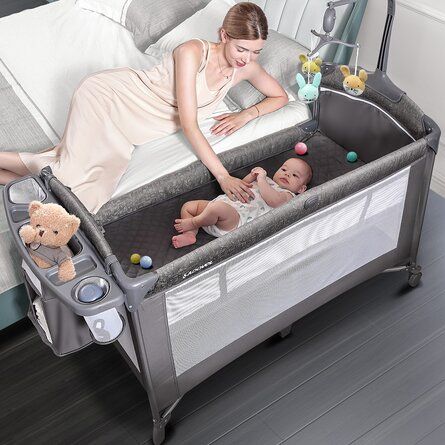
When it comes to design, both cribs and pack and plays come in various styles and colors, allowing parents to choose one that fits their taste and nursery decor. Cribs are typically larger and more stationary, while pack and plays are smaller and more portable. Pack and plays are designed to be easily packed up and moved, making them perfect for travel or for parents who need to move the baby’s sleeping area from room to room.
Features are another important consideration when choosing between a crib and pack and play. Cribs typically come with a toy mobile that can be attached to the top rail, providing entertainment for the baby while also promoting visual and cognitive development. Some cribs also come with a built-in diaper changing table, making it easier for parents to change their baby’s diaper without having to leave the room.
Pack and plays, on the other hand, are designed to be more versatile. Many pack and plays come with a built-in diaper changing table, allowing parents to change their baby’s diaper without having to leave the pack and play. Some pack and plays even convert into a bassinet or playpen, making them a more economical choice for parents who want a product that can grow with their baby.
Convertible cribs are another popular option for parents. These cribs provide parents a durable product that they may use for many years by converting from a standard crib into a daybed, toddler bed, or even a full-size bed. Combo cribs are also available, which combine a crib and changing table into one piece of furniture, saving space in the nursery.
Overall, the design and features of a crib or pack and play will depend on the specific product chosen. Parents should consider their needs and lifestyle when choosing between the two.
Safety Considerations
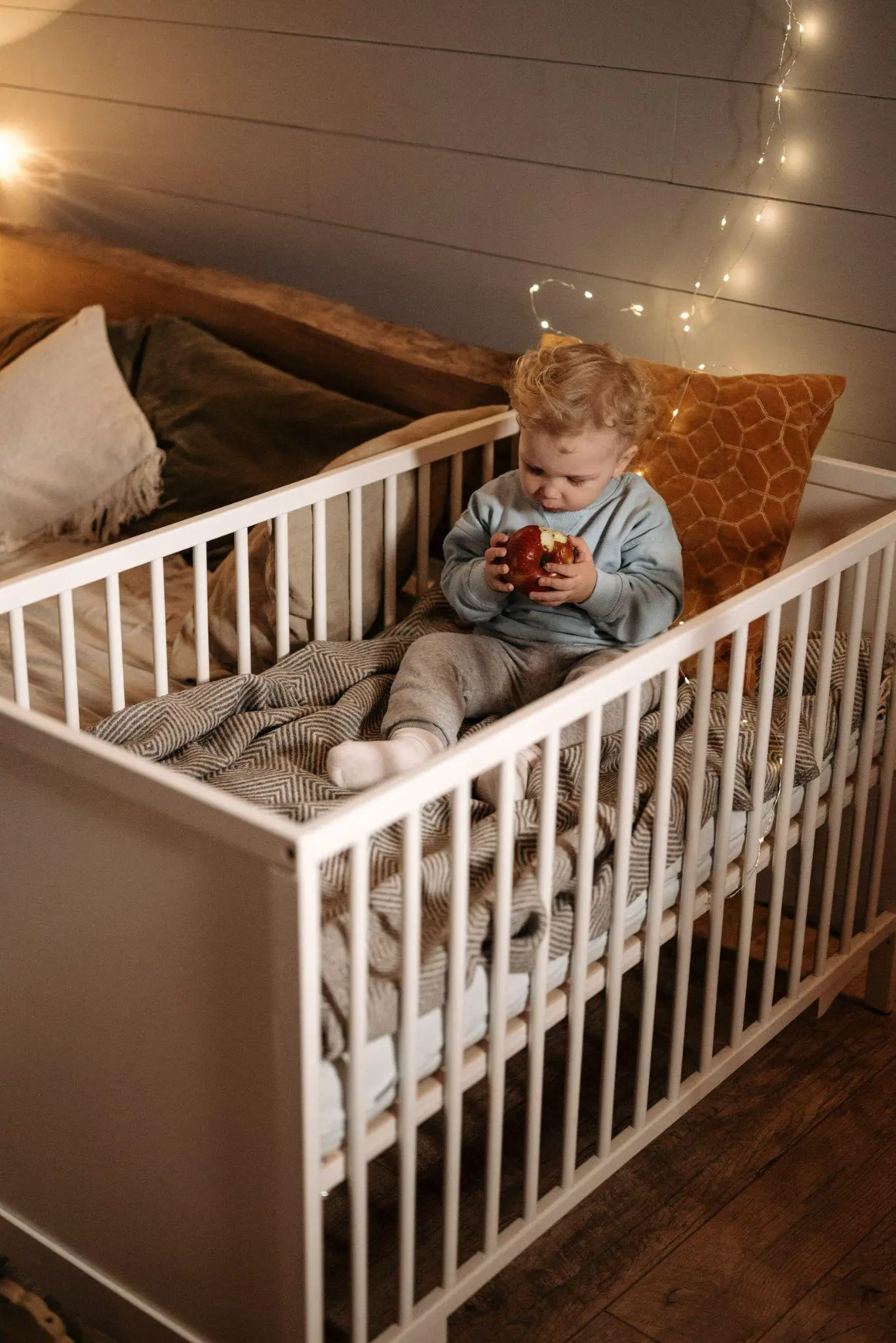
When it comes to choosing between a crib and a pack and play for your baby, safety should be the top priority. Both cribs and pack and plays are considered safe sleeping solutions for babies, but there are some important safety considerations to keep in mind.
One of the most important safety considerations is the risk of Sudden Infant Death Syndrome (SIDS). The American Academy of Pediatrics (AAP) states that putting a baby to sleep on their back is the safest position and can lower the incidence of SIDS. Both cribs and pack and plays are designed to provide a safe sleeping environment for babies when used correctly.
Another safety consideration is the safety standards for cribs and pack and plays. The Consumer Product Safety Commission (CPSC) sets safety standards for cribs and pack and plays to ensure they meet certain safety requirements. It is important to make sure that any crib or pack and play you purchase meets these safety standards.
Mesh sides are a common feature of pack and plays, and they can provide a breathable and comfortable sleeping environment for babies. However, it is important to make sure that the mesh sides are secure and not ripped or torn, as this can pose a safety risk for babies.
Overall, both cribs and pack and plays are safe sleeping solutions for babies when used correctly and in accordance with safety standards. It is important to carefully consider your specific needs and preferences when choosing between the two options.
Cost Analysis
When it comes to choosing between a crib and a pack and play, cost is a significant factor to consider. While both options can be affordable, there are some differences in price to keep in mind.
A standard crib typically costs between $150 to $200, while a pack and play can cost around $50 or so. However, more expensive cribs with additional features can cost upwards of $500 or more, while high-end pack and plays can cost around $300.
It’s important to note that a crib will likely be used for a longer period than a pack and play. A crib can be used from birth until the child is around 2-3 years old, while a pack and play is typically only used for the first year or so. Therefore, even while a crib may cost more up front, it can end up being more affordable overall.
Another factor to consider is that a crib may require additional purchases, such as a mattress and bedding, which can add to the overall cost. On the other hand, a pack and play typically comes with a mattress and can be used for travel, making it a more versatile option.
Ultimately, the decision between a crib and a pack and play will depend on a family’s budget and individual needs. Even while a crib may initially cost more, it can wind up being more affordable overall. However, a pack and play can be a more affordable and versatile option for families on a budget or those who frequently travel.
Portability and Travel
When it comes to portability and travel, the Pack and Play and the travel crib have different features to offer. The travel crib is designed with portability in mind and is a lightweight option that is easy to carry around. It is collapsible and can be packed into a backpack or a carry-on suitcase, making it a convenient option for families who are always on the go.
On the other hand, the Pack and Play is also portable but is bulkier and heavier than the travel crib. It is typically used for occasional naps or as a playpen and comes with wheels that make it easy to move around. However, it may not be the best option for families who travel frequently as it can take up more space in the car or airplane.
If portability is a top priority, then the travel crib is the better option. It is designed to be lightweight, collapsible, and easy to carry around. It is perfect for families who are always on the move and need a crib that can be easily transported.
Another factor to consider when it comes to portability is the size and weight of the crib. The travel crib is typically smaller and lighter than a traditional crib, making it easier to move around. It is also designed with mobility in mind, with some models featuring wheels or backpack straps for easy transportation.
In contrast, the Pack and Play is bulkier and heavier than a travel crib, making it less portable. It is typically used for occasional naps or as a playpen and may not be the best option for families who travel frequently.
Overall, when it comes to portability and travel, the travel crib is the better option. It is designed to be lightweight, collapsible, and easy to carry around, making it perfect for families who are always on the move.
Space and Storage
One of the biggest factors to consider when deciding between a crib and a pack and play is space. Cribs are typically larger and more permanent pieces of furniture that take up a significant amount of room in a nursery. They are not easily moved around and can be difficult to store if not in use. On the other hand, pack and plays are much more compact and portable, making them a great option for families with limited space.
If space is a concern, a pack and play may be the better choice. They can be easily stored in a closet or under a bed when not in use, and can even be taken on trips or to a grandparent’s house. Additionally, many pack and plays come with additional features like a changing table or storage compartments, which can help save even more space in a nursery.
However, if space is not an issue, a crib may be a better long-term investment. Cribs are designed to last for several years and can even be converted into a toddler bed as the child grows. While they may take up more room, they provide a stable and secure sleeping environment for the child.
Ultimately, the decision between a crib and a pack and play will depend on the family’s individual needs and living situation. Families with limited space may find that a pack and play is the more practical choice, while those with larger nurseries may prefer the long-term investment of a crib.
Comfort and Sleep
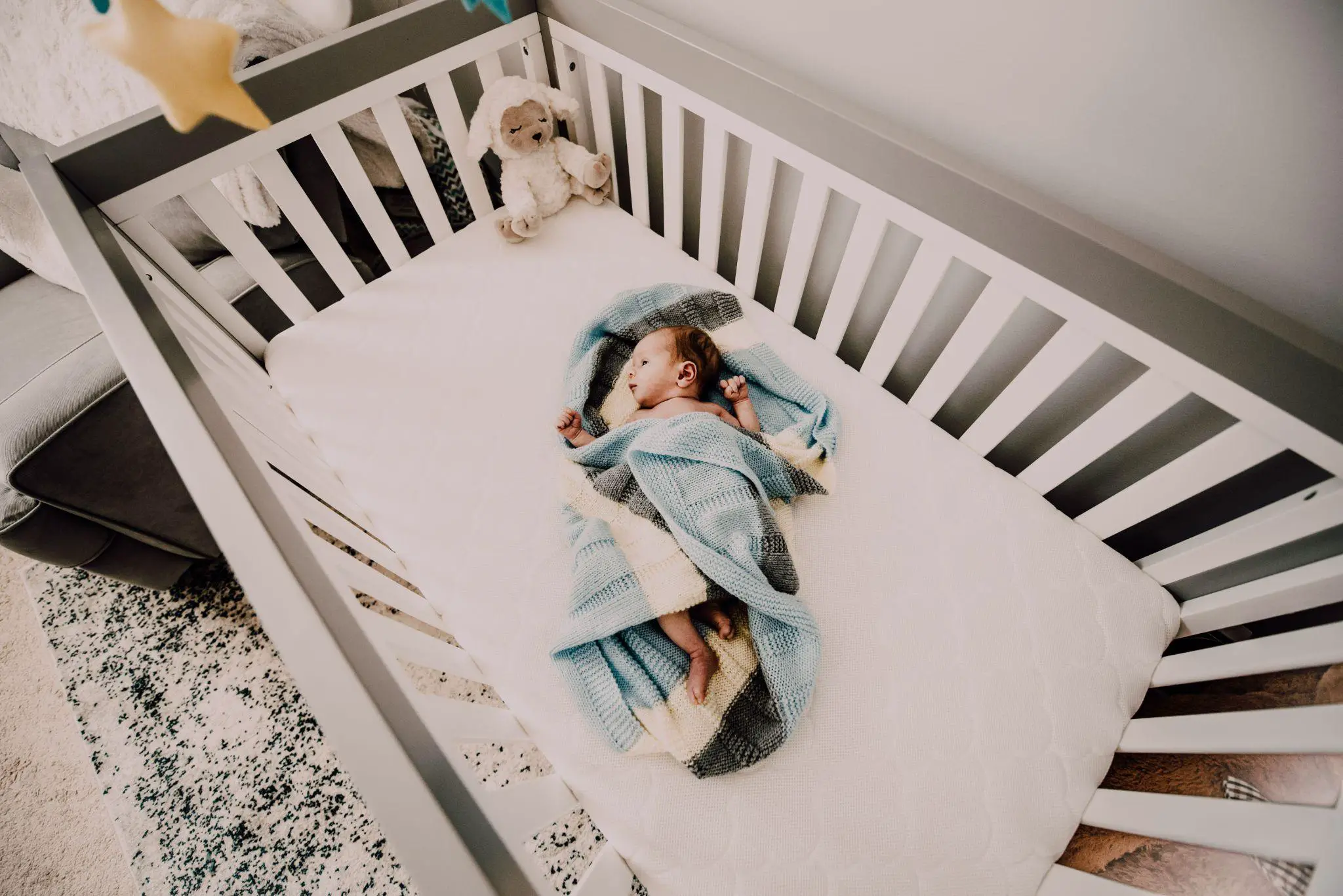
When it comes to comfort and sleep, both cribs and pack and plays have their pros and cons. Cribs typically offer a larger sleeping surface and more room for the baby to move around. They also often come with thicker, more comfortable mattresses that can provide better support for the baby’s growing body. On the other hand, pack and plays are more portable and can be used as both a sleeping surface and a play area. However, they may not be as comfortable for long-term sleeping as cribs.
One thing to keep in mind is that the mattress you use can greatly impact your baby’s comfort and sleep quality. According to the AAP, a firm, flat mattress is the safest sleeping surface for infants. Both cribs and pack and plays can accommodate this type of mattress, but it’s important to make sure the mattress fits snugly and does not create any gaps where the baby could become trapped.
Another factor to consider is the sleeping surface itself. Some pack and plays come with a bassinet attachment that provides a smaller, more cozy sleeping space for newborns. However, as the baby grows, they may need more room to move around and stretch out. Cribs offer more space and can be used for longer periods of time, but they may not be as convenient for travel or smaller living spaces.
Ultimately, the choice between a crib and pack and play will depend on your specific needs and preferences. If you plan on traveling frequently or have limited space, a pack and play may be the better choice. However, if you have the room and want a more permanent sleeping solution, a crib may be the way to go. Regardless of which option you choose, make sure to prioritize your baby’s safety and comfort by using a firm, flat mattress and a snug-fitting sheet.
Long-Term Use and Conversion
When it comes to long-term use, cribs are the clear winner. They are designed to last for several years, and can even be converted into a toddler bed when your child outgrows the crib. This means that you can use the same piece of furniture for several years, which can save you money in the long run.
Pack and plays, on the other hand, are not designed for long-term use. While they can be used as a crib for short periods of time, they are not as sturdy as cribs and do not have the same features, such as drop-down sides. Additionally, they are not designed to be converted into a toddler bed, so you will need to purchase a separate bed when your child outgrows the pack and play.
If you are looking for a convertible option, there are cribs that can be converted into a toddler bed. These cribs usually come with a conversion kit that allows you to remove one side of the crib and replace it with a low guardrail. This creates a safe sleeping space for your child and allows them to climb in and out of bed on their own.
Overall, if you are looking for a piece of furniture that will last for several years and can be converted into a toddler bed, a crib is the way to go. However, if you are looking for a portable option for travel or for use in another room, a pack and play may be a better choice.
Ease of Assembly
When it comes to setting up a sleeping space for your baby, ease of assembly is an important factor to consider. Both cribs and pack and plays require assembly, but some may be easier to put together than others.
Cribs
Cribs typically require more assembly than pack and plays. They usually come in several pieces and require tools such as a screwdriver and hammer. Some cribs may also require more than one person to assemble due to their size and weight.
However, once a crib is assembled, it is a permanent fixture in your home and does not need to be taken apart and reassembled for travel or storage.
Pack and Plays
Pack and plays are generally easier to assemble than cribs. They often come with fewer pieces and may not require any tools for assembly. Some pack and plays even come with a one-step setup process, allowing you to easily fold and unfold the playard.
Pack and plays are also designed for travel and can be easily taken apart and stored in a carrying case. This makes them a convenient option for families who frequently travel or need to move the playard from room to room.
Overall, both cribs and pack and plays require assembly, but pack and plays tend to be easier to assemble and more convenient for travel.
Types and Brands

When it comes to baby gear, parents have a plethora of options to choose from. Two of the most popular choices for sleeping arrangements for babies are cribs and pack and plays. However, there are different types and brands available in the market for each option.
Types
There are several types of cribs available, including mini cribs, full-size cribs, and regular cribs. Mini cribs are smaller in size and are perfect for parents who have limited space in their homes. Full-size cribs are larger and offer more space for the baby to sleep and play. Regular cribs are the most common type of crib, and they come in various designs and styles.
Pack and plays, on the other hand, are portable and easy to set up. They are perfect for parents who travel frequently or have limited space in their homes. Playards are another type of pack and play that functions as a sleep or play area, as it typically contains a mattress.
Brands
Graco Pack n Play is one of the most popular brands of pack and plays in the market. It is known for its durability, ease of use, and portability. Graco offers a wide range of pack and plays, including those with bassinets and changing tables.
When it comes to cribs, there are several brands to choose from, including Delta Children, Babyletto, and DaVinci. Delta Children is a popular brand that offers a wide range of cribs in various styles and designs. Babyletto is known for its modern and sleek designs, while DaVinci offers eco-friendly and sustainable cribs.
In conclusion, parents have several options to choose from when it comes to sleeping arrangements for their babies. It is important to consider the space available, budget, and lifestyle before making a decision.
Conclusion
When it comes to deciding between a crib and a pack and play for a baby, there is no one-size-fits-all answer. Each option has its unique advantages and disadvantages, and parents should consider their lifestyle, budget, and space constraints before making a decision.
Crib can be a great investment for parents who have a permanent residence and want a long-term sleeping solution for their baby. Cribs offer more space for babies to move around, and they can be used for several years. However, they are also more expensive and take up more space than pack and plays.
On the other hand, pack and plays are more affordable and portable than cribs, making them a versatile choice for parents who travel frequently or have limited space. Pack and plays can also serve as a playpen during the day, and some models come with additional features like changing tables and bassinets. However, they are not as spacious as cribs, and babies may outgrow them quickly.
Ultimately, the decision between a crib and a pack and play comes down to personal preference and lifestyle. Some parents may prefer the durability and spaciousness of a crib, while others may opt for the convenience and portability of a pack and play. Whatever parents choose, it is essential to prioritize safety and comfort for their little one.
Frequently Asked Questions
Can a baby safely spend each night in a pack n’ play?
Yes, it is safe for a baby to sleep in a pack n play every night. However, it is important to ensure that the pack n play is set up correctly and that the baby is put to sleep on a firm and flat surface. It is also important to follow the manufacturer’s guidelines for weight and age limits.
How long can a baby sleep in a pack and play?
A baby can sleep in a pack and play until they are around 3 years old or until they reach the weight limit specified by the manufacturer. It is important to note that pack and plays are generally smaller than cribs and may not provide enough space for a growing child.
When do babies use pack and play?
Babies can use pack and plays from birth until they outgrow them. Pack and plays can be used as a safe space for babies to play, nap, and sleep.
Pack n play vs crib size
Pack and plays are generally smaller than cribs and may not provide enough space for a growing child. Cribs are a more permanent fixture in a baby’s room and can be converted into a toddler bed. Pack and plays, on the other hand, are portable and can be easily moved from room to room or taken on trips.
Best pack ‘n play instead of crib
The best pack and play instead of a crib will depend on the individual needs of the family. Some popular options include the Graco Pack ‘n Play On the Go, the Lotus Travel Crib and Portable Baby Playard, and the Joovy Room2 Portable Playard.
At what age do babies need a pack and play?
Babies do not necessarily need a pack and play, but they can be a useful item for families with young children. Pack and plays can be used from birth until a child outgrows them, which is typically around 3 years old.
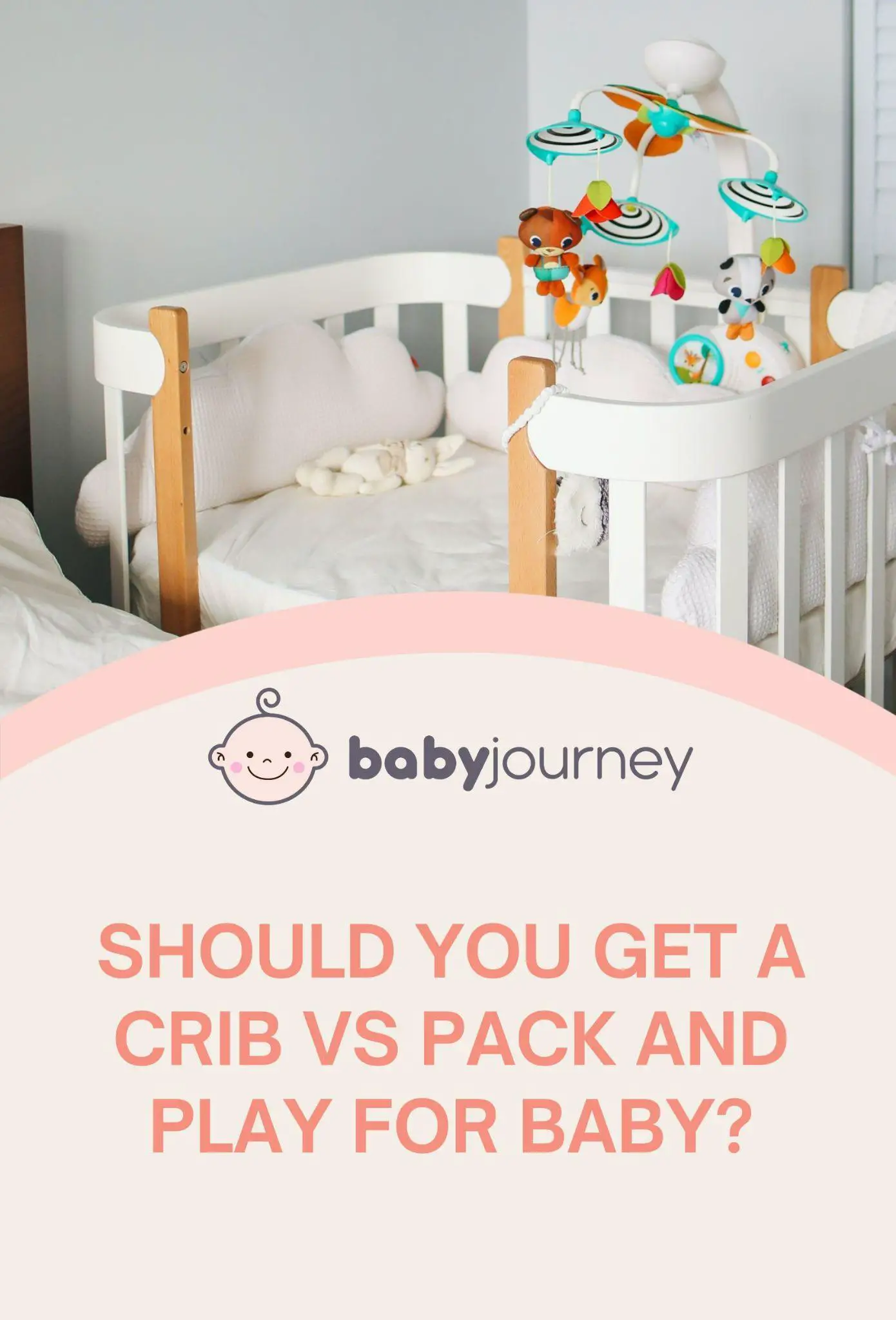

 PARENTING TIPS
PARENTING TIPS PREGNANCY
PREGNANCY BABY CARE
BABY CARE TODDLERS
TODDLERS TEENS
TEENS HEALTH CARE
HEALTH CARE ACTIVITIES & CRAFTS
ACTIVITIES & CRAFTS